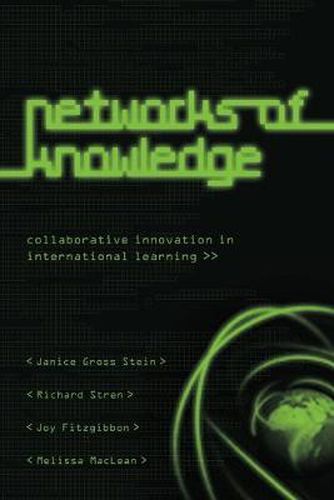Readings Newsletter
Become a Readings Member to make your shopping experience even easier.
Sign in or sign up for free!
You’re not far away from qualifying for FREE standard shipping within Australia
You’ve qualified for FREE standard shipping within Australia
The cart is loading…






The network is the pervasive organizational image of the new millennium. This book examines one particular kind of network - the ‘knowledge network’ - whose primary mandate is to create and disseminate knowledge based on multidisciplinary research that is informed by problem-solving as well as theoretical agendas. In their examination of five knowledge networks based in Canadian universities, and in most cases working closely with researchers in developing countries, the authors demonstrate the ability of networks to cross disciplinary boundaries, to blend the operational with the theoretical, and to respond to broad social processes. Operating through networks, rather than through formal, hierarchical structures, diverse communities of researchers create different kinds of knowledge and disseminate their results effectively across disciplinary, sectoral, and spatial boundaries. Analysis of networks in health, environment, urban, and educational fields suggests that old categories of ‘north’ and ‘south’ are becoming blurred, and that the new structures of knowledge creation and dissemination help to sustain collaborative research.
$9.00 standard shipping within Australia
FREE standard shipping within Australia for orders over $100.00
Express & International shipping calculated at checkout
The network is the pervasive organizational image of the new millennium. This book examines one particular kind of network - the ‘knowledge network’ - whose primary mandate is to create and disseminate knowledge based on multidisciplinary research that is informed by problem-solving as well as theoretical agendas. In their examination of five knowledge networks based in Canadian universities, and in most cases working closely with researchers in developing countries, the authors demonstrate the ability of networks to cross disciplinary boundaries, to blend the operational with the theoretical, and to respond to broad social processes. Operating through networks, rather than through formal, hierarchical structures, diverse communities of researchers create different kinds of knowledge and disseminate their results effectively across disciplinary, sectoral, and spatial boundaries. Analysis of networks in health, environment, urban, and educational fields suggests that old categories of ‘north’ and ‘south’ are becoming blurred, and that the new structures of knowledge creation and dissemination help to sustain collaborative research.